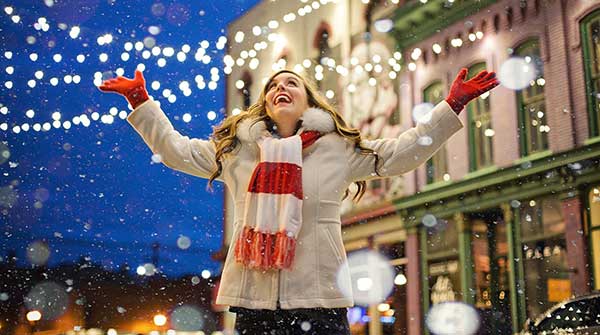Across traditions and time, there is a longing for light to brighten the darkness of winter
 I had a striking visual of light in darkness early one morning this month. A bright light, probably the planet Venus, shone with extraordinary clarity and pierced an otherwise black sky.
I had a striking visual of light in darkness early one morning this month. A bright light, probably the planet Venus, shone with extraordinary clarity and pierced an otherwise black sky.
Given my Christian faith and the time of year – it was less than a month until Christmas – my thoughts turned to the legendary Star of Bethlehem and the theme of light shining in darkness.
During the month of December, the symbolism of light in darkness is prevalent. Winter solstice occurs. Celebrated in ancient pagan traditions as the rebirth of the sun, it marks the shortest and darkest day of the year. In the Jewish tradition, Hanukkah, the festival of light, is celebrated for one week in December. Christmas, which celebrates the birth of Jesus as light to the world, also takes place in December.
Across traditions and time, there has been a longing for light to brighten the darkness of winter.
Every year in December, there’s some kerfuffle about Christmas. Objections arise to the use of anything associated with the season that even remotely references Christianity.
But as someone who really likes sparkly Christmas lights, the suggestion that Christmas lights force Christian beliefs on others seems silly, overly severe and misses the point.
Municipalities don’t put up decorative lights, colloquially called Christmas lights, in December to promote Christianity. The lights beautify the public space at the darkest and dreariest time of the year. The displays contribute to the atmosphere of goodwill that characterizes the holiday season. And, in larger centres, the light displays attract people into the city. This contributes dollars to the local economy.
For the vast majority, Christmas lights are not a proclamation of Christian belief. They are pretty, bright and fun. They punctuate the darkness of winter. They express participation in a seasonal holiday that celebrates relationships and generosity.
It was a tradition when our children were growing up to go on a Christmas light tour. We usually did this after attending mass on Christmas Eve. We would drive through our village oohing and aahing at the colourful displays of lights.
Last year, when family was home for the holidays, there were several outings to look at lights and “blow-ups,” as my grandchildren call those inflatable characters popping up everywhere.
Our family is not unique in driving around to see Christmas light displays. It’s a common and simple activity that many enjoy. Christmas would seem incomplete without those strands of colourful lights illuminating the landscape.
The world is full of real problems with serious implications for humanity. Christmas lights aren’t one of them. For most people, Christmas lights are just fun. Let’s enjoy the beauty and brightness they provide at the darkest time of the year.
Louise McEwan has degrees in English and Theology. She has a background in education and faith formation.
For interview requests, click here.
The opinions expressed by our columnists and contributors are theirs alone and do not inherently or expressly reflect the views of our publication.
© Troy Media
Troy Media is an editorial content provider to media outlets and its own hosted community news outlets across Canada.

